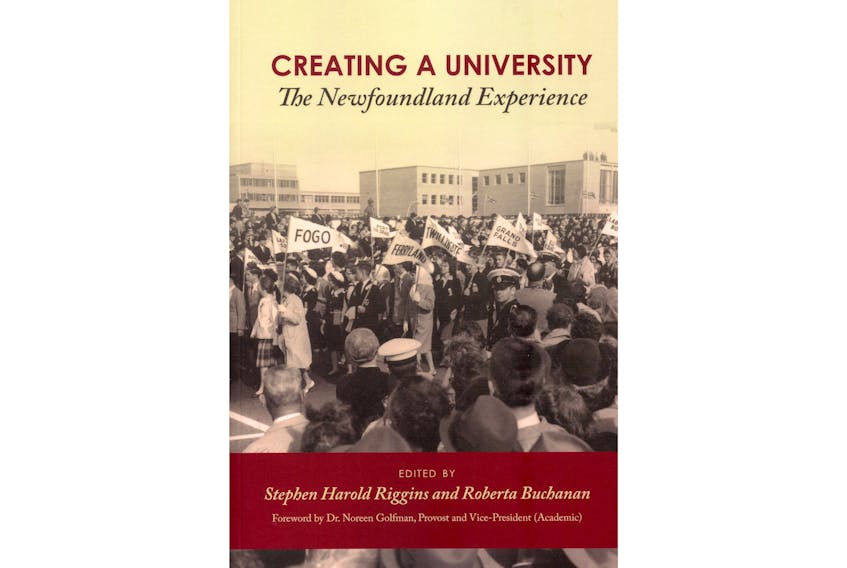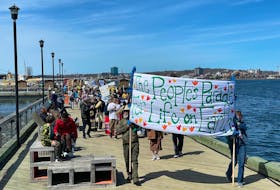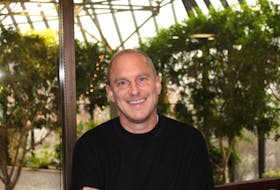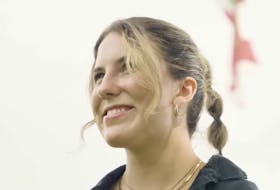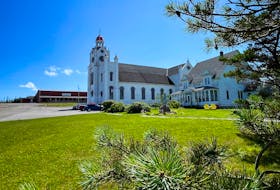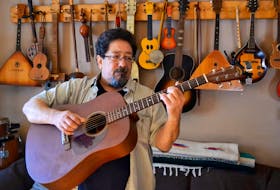At first glance this might seem a rather staid-sounding topic, but a university is perhaps the most idea-drenched and optimistic of brick-and-mortar institutions. The concept itself is ancient – the oldest still exiting university was founded 859 AD in Morocco – but Memorial, NL’s first and only, came together in living memory. Altogether, this book has generated a fair amount of buzz.
Co-editors Roberta Buchanan and Stephen Harold Riggins describe it as “a series of ‘MUNographies’ … In the years covered by this volume, primarily 1950 to 1990, few Memorial faculty were Canadians, let alone Newfoundlanders. These ‘come from aways’ arrived in the middle of a post-colonial cultural renaissance, which saw a movement toward new interdisciplinary studies, and laid the groundwork for many of the programs and courses that are offered at the University today.”

The genesis of this book came from the Memorial University Pensioners’ Association Memoir Group — this kind of autobiography, a “subgenre of life writing,” has only grown in popularity. Buchanan was the main driver here; this has long been part of her resume and teaching raison d’être. Stephen Harold Riggins helped steer the collection into through publication, where it joins a small but expanding number of similar anthologies.
Following two “introductory survey chapters,” concerning the historical backdrop of Memorial and MUN Extension, by Melvin Baker and Jeff Webb, the pieces are divided into a quartet of themes: “The Old Parade Street Campus,” “New Developments,” “New Adventures – Arriving,” and “Growing Pains.”
Most entries are short – five pages, a dozen.
They are often as much about St. John’s, and Newfoundland and Labrador as they are about Memorial. For Elizabeth Willmott, whose husband, Don, was Memorial’s first sociologist, it was a milieu of “landscapes and creative people.” In her three years in St. John’s in the late 1950s she met “Brits with theatre experience; a Korean aristocratic physicist and his Canadian-Japanese wife; Jews who escaped the Holocaust.”
This cohort, though, largely did not stay. They were part of a larger, post-WWII flux of professional migration (the Willmotts had come from Java, almost moved to Australia, and then went on to Saskatchewan).
Dorothy Milne’s stint with Memorial lasted much longer, and her work as a librarian included the transition from Henrietta Harvey to the QEII. Besides describing the intricately organized process of moving books from two locations (HH and offsite storage), she also clarifies whether the library was accidentally built backwards (no), and if it has a ghost (yes, two).
Bruce Shayer, who headed Mathematics and Statistics, opens by recalling his first trip to St. John’s. “This included a visit to Signal Hill, where the wind was so strong we were not able to get out of the car.”
Then comes his partner Jo Shawyer’s account, which starts: “I’m the wife … He came for a position at the university. I came with the children. It was 1985.” She also began teaching in a sessional position with the Geography Department, while her curiosity and independence to MANL and other archival contacts. Later she obtained tenure and with colleague Chris Sharpe did and does insightful research contextualizing Churchill Park.
That is one example of the links a university can make to its broader community, and within a national or international social and political structure. Other topics include public broadcasting, the medical school, sociology, folklore, philosophy, the Botanical Gardens, feminism (in the 1960s it was policy that any female lecturer who married lost her job), and student activism (with Steven B. Wolinetz’s “The 1972 Occupation of the Arts and Administration Building: What Happened and Why”).
But the submissions are foremost delightfully and informatively personal. Buchanan was a fill-in librarian at Birmingham University in 1964, where “At the weekly seminars, I made the tea and handed around the biscuits.” Class, academic, and gender barriers were rigid; “the term ‘glass ceiling’ had not yet been invented. It was more like a concrete ceiling.” She applied to universities all over the world, and, once accepted to MUN, was off on a new adventure. In St. John’s she finds depressing weather and lonely routines but she also starts to find her feet, an apartment on Queen’s Road, and work, a salary, and circumstances that would have been denied her in Birmingham. Of course, there’s still the challenge of preparing lectures. “Teaching was just talking about literature, wasn’t it? How difficult could it be?”
“Creating” also includes black and white photos, a list of suggested readings, and an index.
Joan Sullivan is editor of Newfoundland Quarterly magazine. She reviews both fiction and non-fiction for The Telegram.
RELATED:

